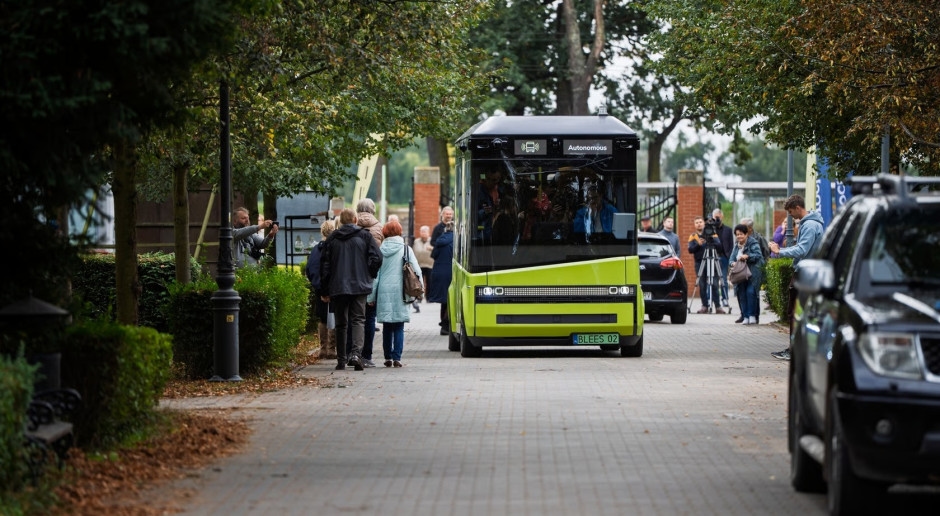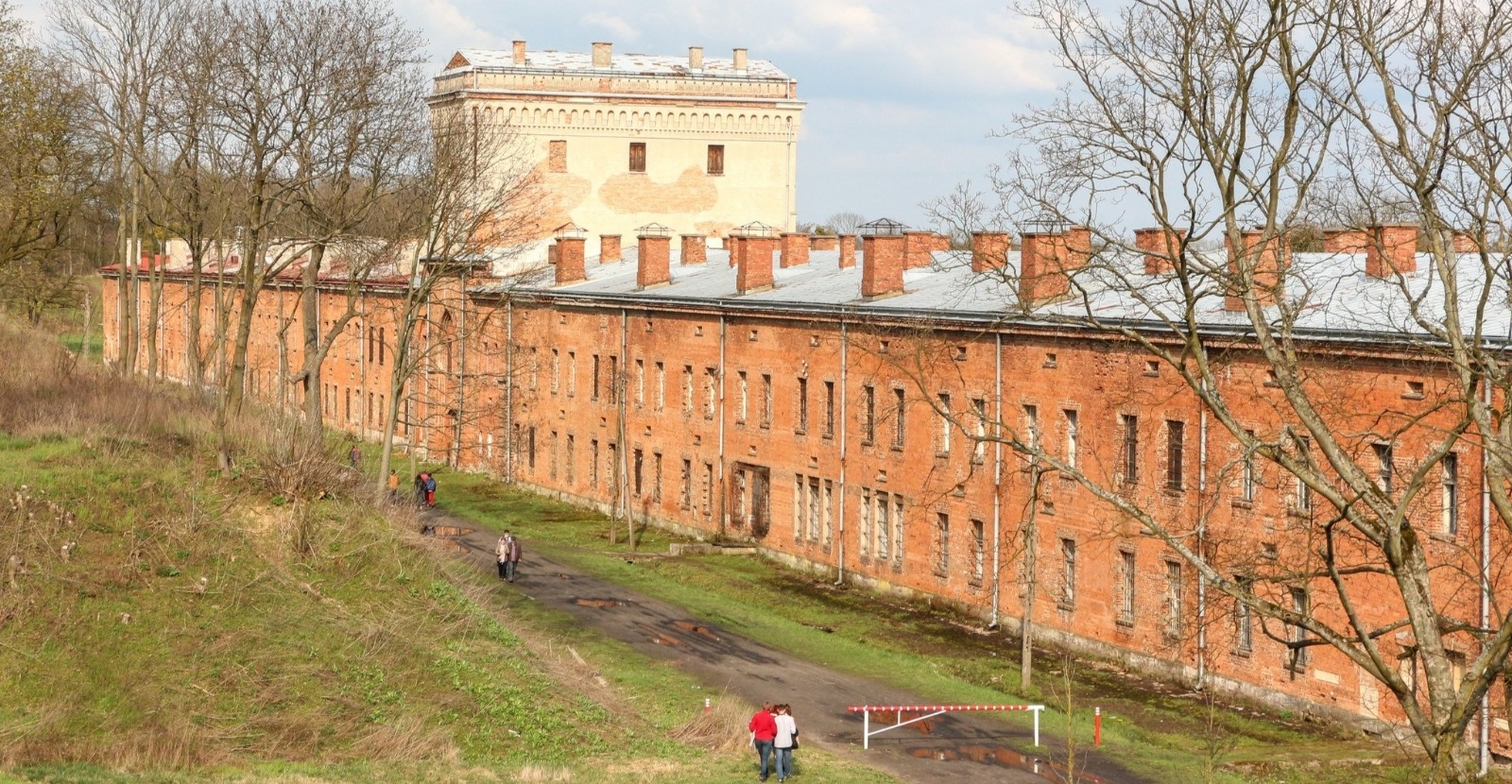It makes decisions and reacts to obstacles on its own. Polish driverless minibus undergoes testing.

- Testing of an autonomous minibus has concluded in Wrocław, after two previous phases in cities including Katowice. Local authorities are pleased with the results and would be happy to use this technology on a daily basis, for example, at cemeteries or for transportation to transfer hubs in less urbanized areas.
- - We can use such a vehicle in many cases, approaching the topic very flexibly - says the Rector of the Krakow University of Technology, Prof. Andrzej Szarata, admitting, however, that this will not happen until we prepare the appropriate legal environment.
- Dr. Robert Tomanek, a professor at the University of Economics in Katowice, points out that such minibuses are being used on a larger commercial scale in China, but Europe remains in the testing phase and this is unlikely to change in the coming years. "Widespread use, however, will likely only occur after 2030."
A few years ago, the Polish company Blees created an autonomous minibus, 5 m long and with a capacity of up to 15 passengers , which was first tested in Katowice (Three Ponds Valley) and Gliwice (area of the Silesian University of Technology, including ul. Akademicka).
"While the designated routes were straight, the organization of the pilots themselves resembled driving through intricate, serpentine roads. This is due to complex regulations that, in theory, allow for autonomous vehicle testing on public roads, while simultaneously imposing prohibitive requirements for their implementation," Blees notes on its website.
He adds that in Katowice and Gliwice this was achieved thanks to the support of the city authorities and the involvement of carriers (PKM Katowice and PKM Gliwice) as well as the cooperation of the services.
The tests were successful, and the data collected during them led to further development of the vehicle and further tests – again in the Three Ponds Valley in Katowice, but also in Silesian Park in Chorzów. Recently, the minibus appeared at the Osobowice Cemetery in Wrocław .
It makes decisions and reacts to obstacles on its own. "The structure is not free from the problems of infancy."" The vehicle makes its own decisions about what to do in a given situation and reacts to obstacles. However, during tests, an operator rides on board to ensure safety and can take over control at any time ," emphasizes Tomasz Pacan, CEO of Blees, on the Wrocław City Hall website. "It is equipped with sensors and sensors: three radars, 11 cameras, and seven lidars—scanning devices that use laser pulses to measure the distance to objects and create three-dimensional maps of the surroundings. It also has a highly precise GPS."

Testing in the capital of the Lower Silesian Voivodeship has just concluded. Local authorities are satisfied with the results, although they see room for improvement.
"The vehicle is a new design, not free from early issues that are being addressed on an ongoing basis," admits Tomasz Sikora from the Wrocław City Hall. " It has carried many passengers who rate it positively. We are pleased with the collaboration with the vehicle's designers ," he adds.
Important data for use in areas with poorer connections to main arteries, among othersKatowice also assesses the matter positively.
"The tests were an extremely interesting experience for us. We were happy to participate because these types of solutions could become a valuable complement to traditional forms of communication in the future," notes Malwina Kaczor from the Katowice Publishing Agency.
He adds that autonomous vehicles are a direction worth looking into, especially in the context of areas with poorer connections to major urban arteries.
- Thanks to the tests carried out, we obtained important data on the behavior of this type of vehicles on roads, which will probably be used in further stages of work on them - he concludes.
Prof. Andrzej Szarata: They could, for example, transport children to schools or be used as internal transport in large production plants.Experts point out that it is precisely on these types of routes—on the outskirts of cities, where regular buses are difficult to access—that smaller, autonomous vehicles would be most effective, transporting passengers to locations where they can transfer to another mode of transport, for example, to the city center. They could be used to support the increasingly popular on-demand services.
"We already have state-of-the-art technological solutions that optimize routes, showing exactly where the vehicle is and when it will pick up a passenger. The next step would be the introduction of autonomous vehicles," comments Professor Andrzej Szarata, Rector of the Krakow University of Technology.

According to the rector, in the future they could also, for example, transport children to schools or be used as internal transport in large production plants.
"The sky is the limit," meaning there are no limits to the use of autonomous vehicles. We can use such a vehicle in many cases, approaching the topic very flexibly," adds Professor Szarata.
The Wrocław authorities would see them in the environment where they were just tested.
"Generally, we see a significant need for this type of communication. We will definitely want to introduce this communication solution—autonomous vehicles—at this and other Wrocław cemeteries ," emphasizes Tomasz Sikora from the Wrocław City Hall.
In Katowice, however, they point out that if such vehicles were to be mass-produced, they would consider using them, for example, on access routes to larger transfer centers. But that's not all.
"In places where public transport is currently limited for economic reasons, autonomous buses could improve transport accessibility," says Malwina Kaczor. "They would also be ideal for places like cemeteries, large parking lots, recreational areas, hospital complexes, and university campuses . This technology could also support the mobility of the elderly and people with disabilities."
An operator must be on board. Road traffic law needs to be changed.So what's stopping driverless minibuses from being produced on a larger scale and, for example, joining city bus fleets? Unfortunately, there are quite a few, and the biggest obstacle is legal issues .
Katowice points out that they are equipped with advanced sensors, 3D object recognition systems and artificial intelligence, and a key role is played by a precise localization system that allows movement with an accuracy of up to a few centimeters.
"However, current regulations do not allow such vehicles to operate independently without an operator. To fully utilize their potential, changes to road traffic law would be necessary—not only enabling the use of autonomous vehicles but also appropriately regulating safety and liability issues ," points out Malwina Kaczor.
In the US, autonomous taxis are already carrying passengers. In Europe, there are still many dilemmas.The Rector of the Krakow University of Technology reminds that autonomous taxis are already carrying passengers in the US, for example in San Francisco.
"A driverless car approaches, picks up a passenger, and takes you from point A to point B, navigating autonomously in traffic," notes Professor Andrzej Szarata. " This is already possible in the US, but not yet in Poland and Europe. Work is underway, but there are still many dilemmas related to the legislation. From legal aspects such as who is responsible for causing an accident to insurance issues."
He points out that for now, autonomous vehicles can be tested in closed areas or on separate parts of the network, but these restrictions are not due to technical reasons, but rather to procedural ones.
The Chinese have gone further. In our country, the scope is rather limited to airports, cemeteries, and university campuses.Dr. hab. Robert Tomanek, professor at the University of Economics in Katowice, points out that such minibuses are operated on a larger commercial scale in China , while Europe remains in the testing phase, similar to those carried out in Poland.
- It is generally assumed in various publications that autonomous vehicles in public transport will be used to a limited extent in the coming years - this applies in particular to traffic management at airports, on academic campuses, in large cemeteries, parks - i.e. in areas with limited traffic speed - emphasizes Professor Tomanek.




